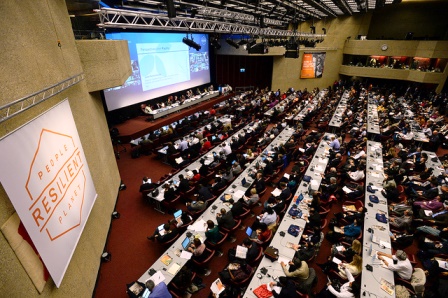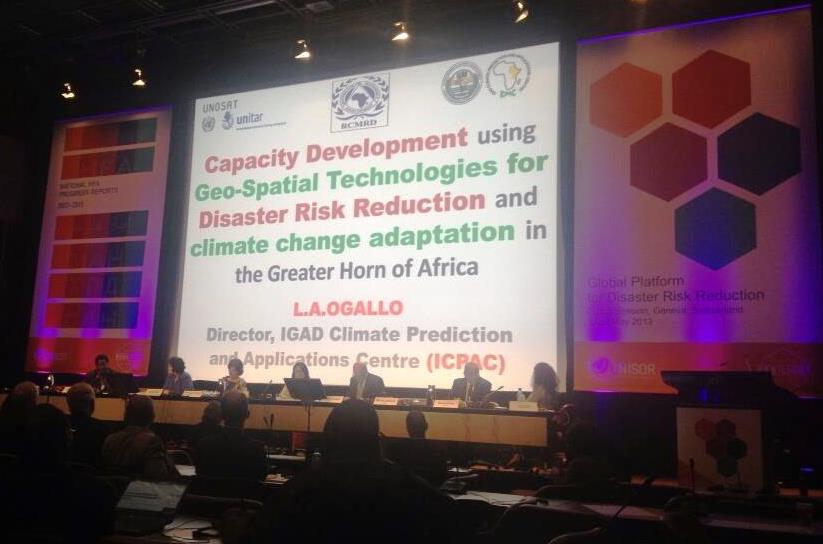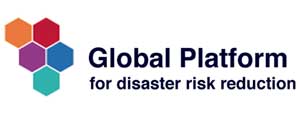Geneva, Switzerland - The 2013 Global Platform for Disaster Risk Reduction (DRR), attended by a record 3,500 people and representatives from 172 governments, ended in Geneva after three days of meetings and side events with a call for "the immediate start of work to develop targets and indicators to monitor the reduction of risk." The other salient news from the large meeting was the confirmation that in 2015 there will be another global conference on disaster reduction. Japan has offered to host the event, which follows in the tracks of the previous World Conference on Disaster Reduction, held in Kobe in early 2005.
 Underpinning the call for targets and indicators is the growing awareness that the disasters of tomorrow may be substantially different from those of our day and require much more innovation and technology to prevent. The same awareness seemed to permeate the words of the Global Platform Chair, Martin Dahinden, who is Director-General of the Swiss Agency for Development and Cooperation. He stated, "there is consensus that the new instrument should build on the HFA [Hyogo Framework for Action] and introduce the necessary innovations to address the challenges of increasing risk over the next 20 to 30 years. We need to enable local action, address climate risk and recognize the central roles of both the scientific community and the private sector which were both very present at this Global Platform."
Underpinning the call for targets and indicators is the growing awareness that the disasters of tomorrow may be substantially different from those of our day and require much more innovation and technology to prevent. The same awareness seemed to permeate the words of the Global Platform Chair, Martin Dahinden, who is Director-General of the Swiss Agency for Development and Cooperation. He stated, "there is consensus that the new instrument should build on the HFA [Hyogo Framework for Action] and introduce the necessary innovations to address the challenges of increasing risk over the next 20 to 30 years. We need to enable local action, address climate risk and recognize the central roles of both the scientific community and the private sector which were both very present at this Global Platform." UNITAR maintained its policy of participating in the Global Platform and report on the concrete steps taken by the Institute to do its own part in the advancement of DRR. Part of UNITAR’s mission is a drive to help national administrations translate in actionable strategies elements of global principles established by world conferences and international conventions. This year’s summary included new applications of geospatial information by UNOSAT like “Map your School” and “GeoDRR” along withCC:LEARN, the “One UN Training Service Platform for Climate Change”. UNITAR also works with local communities to deliver training on DRR via its network of CIFAL Centres.
UNITAR maintained its policy of participating in the Global Platform and report on the concrete steps taken by the Institute to do its own part in the advancement of DRR. Part of UNITAR’s mission is a drive to help national administrations translate in actionable strategies elements of global principles established by world conferences and international conventions. This year’s summary included new applications of geospatial information by UNOSAT like “Map your School” and “GeoDRR” along withCC:LEARN, the “One UN Training Service Platform for Climate Change”. UNITAR also works with local communities to deliver training on DRR via its network of CIFAL Centres.
Francesco Pisano, who leads technology and innovation at the Institute and is also a former DRR specialist, stated, “DRR is at a stage where the recognition of disaster risk as a global threat calls for both global response and local action. Until now it was about emphasising one or the other. The other news of course is the growing recognition that science and technology can make a difference, especially in areas that are potentially going to be out of control rather soon, like hydrogeological risks.”
The Global Platform’s reference to the role of the scientific community is both an implicit call for better and newer technology and a return to the origins of disaster reduction, which was put forward as a global challenge by the scientific community in the late 80s and led to the first World Conference on DRR in Yokohama in 1994.
 This Global Platform confirmed that there will be a successor to the current Hyogo Framework for Action or HFA, the instrument adopted by the World Conference of Kobe in 2005. Among the voices of the Member States concerning this new instrument, the statement by the Government of Norway suggested the adoption of “a simple and operational Framework that can guide member states and local communities in implementing a “hands-on approach” to disaster risk reduction and climate change adaptation.” Many delegates commented on the need and scope of the new post-2015 Framework but all agreed that the current HFA is the strong basis from which to move forward.
This Global Platform confirmed that there will be a successor to the current Hyogo Framework for Action or HFA, the instrument adopted by the World Conference of Kobe in 2005. Among the voices of the Member States concerning this new instrument, the statement by the Government of Norway suggested the adoption of “a simple and operational Framework that can guide member states and local communities in implementing a “hands-on approach” to disaster risk reduction and climate change adaptation.” Many delegates commented on the need and scope of the new post-2015 Framework but all agreed that the current HFA is the strong basis from which to move forward.
No comments:
Post a Comment
You can write whatever you want, but technically, the precise mathematical-statistical forecast of earthquakes based on information about the behavior of wild and domestic animals, birds, fish, and individuals available from 1995, with the advent of social networking.